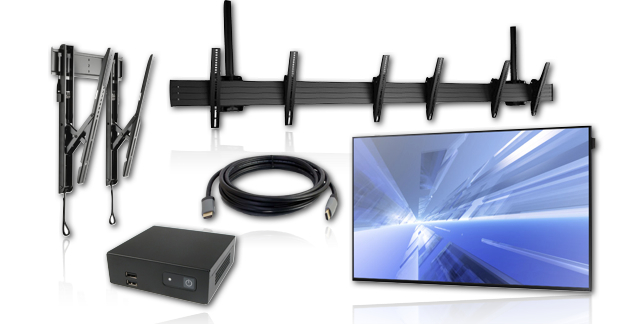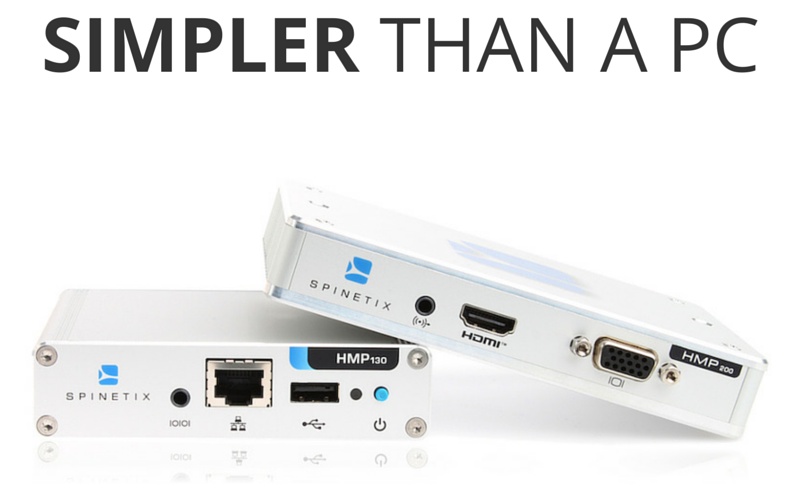
Digital Signage Hardware
Digital Signage Hardware In today's fast-paced digital era, effective communication, and impactful advertising have become essential for businesses to thrive. Traditional static signage is gradually being replaced by dynamic and interactive digital signage, creating a captivating visual experience for customers and enhancing brand messaging. Behind the scenes, the success of digital signage lies in the power of its hardware. In this article, we will delve into the world of digital signage hardware and explore its capabilities, components, and the transformative potential it holds for various industries.
Display Screens:
Digital Signage Hardware At the heart of digital signage hardware are the display screens. These screens come in various sizes, from small panels for indoor use to large-scale LED displays for outdoor advertising. High-definition (HD) and ultra-high-definition (UHD) screens provide crisp and vibrant visuals, capturing the attention of passersby and engaging them in a unique way. With advancements in technology, these screens can now support interactive touch capabilities, allowing users to directly interact with the displayed content.
Media Players:
To drive content on the display screens, digital signage systems rely on media players. Media players are compact devices that store and process multimedia content such as images, videos, and animations. These devices can be connected to the display screens either directly or via a network connection. They enable seamless playback of content, ensuring a smooth and uninterrupted viewing experience. Modern media players often support advanced features such as 4K video playback and remote content management, allowing for effortless updates and customization.
Content Management Systems:
To control and manage the content displayed on digital signage screens, content management systems (CMS) play a crucial role. CMS software enables users to create, schedule, and distribute content across multiple screens or networks. It provides a user-friendly interface for designing visually appealing layouts, organizing content playlists, and monitoring the performance of digital signage campaigns. Some CMS platforms also offer real-time analytics, allowing businesses to track engagement metrics and make data-driven decisions.
Network Connectivity:
Digital signage hardware can be connected to networks via various options, such as Ethernet, Wi-Fi, or cellular connections. Network connectivity enables centralized control and remote management of multiple displays, making it easier to update content and monitor screens from a single location. Cloud-based solutions have gained popularity in recent years, offering the flexibility of accessing and managing digital signage systems from anywhere with an internet connection.
Mounting and Enclosures:
Proper mounting and enclosures are vital for deploying digital signage hardware effectively. Mounting options range from wall mounts and floor stands to ceiling mounts and interactive kiosks, depending on the specific application. Enclosures protect the hardware from environmental factors, ensuring durability and longevity. Weatherproof enclosures are essential for outdoor installations, safeguarding the equipment from rain, dust, and extreme temperatures.
Conclusion:
Digital signage hardware forms the backbone of captivating and immersive advertising experiences that are revolutionizing the way businesses communicate with their target audience. The combination of display screens, media players, content management systems, network connectivity, and mounting solutions offers a powerful toolset for creating dynamic and interactive digital signage installations. As technology continues to advance, we can expect further enhancements in hardware capabilities, including sharper displays, faster processors, and more seamless integration with emerging technologies like augmented reality and artificial intelligence. Embracing digital signage hardware opens up a world of possibilities for businesses across various industries, enabling them to engage, inform, and captivate their customers like never before.

Digital Signage Hardware How Its Work?
Digital signage hardware works by combining various components to create a seamless and interactive visual communication platform. Let's explore how each component plays a role in the functioning of digital signage hardware:
Display Screens:
Digital signage hardware starts with the display screens, which can range from LCD panels to LED displays. These screens showcase the visual content, including images, videos, and animations, to the audience. The screens can be mounted indoors or outdoors, depending on the intended application. They are designed to deliver high-definition or ultra-high-definition visuals, ensuring a captivating viewing experience.
Media Players:
Media players serve as the brains behind digital signage hardware. These devices are responsible for storing, processing, and playing back the multimedia content on the display screens. Media players come equipped with powerful processors and sufficient storage capacity to handle large files and ensure smooth playback. They are often connected to the display screens either directly or via a network connection.
Content Management Systems:
Content management systems (CMS) are essential for managing and controlling the content displayed on digital signage screens. CMS software provides a user-friendly interface for creating, scheduling and distributing content across multiple screens or networks. Users can design visually appealing layouts, organize content playlists, and set specific display times. CMS platforms also allow for remote management, enabling users to update content in real time and monitor the performance of their digital signage campaigns.
Network Connectivity:
Network connectivity is crucial for digital signage hardware to enable centralized control and remote management. It allows for the seamless distribution of content across multiple screens or locations. Digital signage systems can be connected to networks via Ethernet, Wi-Fi, or cellular connections, depending on the availability and requirements of the installation. Network connectivity also facilitates the transfer of data and software updates to media players, ensuring the latest content is displayed on the screens.
Mounting and Enclosures:
Mounting options and enclosures play a vital role in the physical installation and protection of digital signage hardware. Mounting solutions include wall mounts, floor stands, ceiling mounts, or interactive kiosks, depending on the specific application and space available. Enclosures protect the hardware from environmental factors such as dust, moisture, and extreme temperatures. For outdoor installations, weatherproof enclosures are essential to safeguard the equipment from rain, wind, and other harsh elements.
Final Words:
By combining these components, digital signage hardware creates an immersive and interactive communication platform. The media players process and display the content designed and managed through the CMS software. Network connectivity enables remote management and content distribution, ensuring real-time updates. The display screens and mounting solutions provide the physical presence for showcasing the content, captivating viewers, and delivering the desired message effectively.
Overall, digital signage hardware works harmoniously to deliver engaging and dynamic visual experiences, revolutionizing advertising, information dissemination, and communication across various industries.


No comments yet